If you like Slack, you might consider the Spatial Community
21 November 2022
18 November 2022
06 September 2022
Walking to School
For years we have been investigating urban childhood obesity, walking, the food environment and the physical activity environment. Short version: It turns out there are lots of factors that play a role.
This week we are celebrating the start to school by emphasizing our recent finding, led by Robin DeWeese, that if children start walking to school early in life they are most likely to still be walking to school later in their academic career.
The original paper is in Preventive Medicine Reports
Rutgers Today has a strong summary
Futurity picked it up
NJ 101.5 also covered the work (but the 63 smartest breeds is pretty interesting too)
Earth.com too
In the end it was in 120 news outlets. News in the digital era is a whole new thing.
01 September 2022
Red knots redux
In the 1980s, Cape May County birders counted 90,000 red knots visiting their beaches during the spring migration. Last year it was 6,800 and this year it was 12,000.
This week, the NJCF's Jay Watson looks at changes in New Jersey's red knots and horseshoe crabs.
(Note: CRSSA has been helping track them for years)
03 May 2022
A remarkable turf-removal law
Nevada's new turf-removal law is a remarkable step towards sustaining the water supply for that desert state.
The NY Times writes, "The authority estimates there are about 3,900 acres of grass to be removed, which could yield savings of up to 9.5 billion gallons of water annually, or about 10 percent of the region’s allocation from the Colorado."
21 April 2022
Books
[slightly updated reprint]
A. It depends on your interest.
a) An easy avenue to consider as a start would be to get some recent issues of Landscape Architecture Magazine which is published by the American Society of Landscape Architecture and is meant as their semi-official portrayal of the state of the profession.
Ian McHarg's Design With Nature and A Quest for Life.
Duany, Plater-Zyberk, and Speck's Suburban Nation: The Rise of Sprawl and the Decline of the American Dream.
James Howard Kunstler's Geography of Nowhere: The Rise and Decline of America's Man-Made Landscape.
Oh, what the heck. Maybe you should just pick from Planetizen's Top 20 Planning Books list for this stuff. (Or their latest, the Best of 2020)
c) For those who are trying to move up from entry level students to serious students of landscape architecture, here is an edited version of the list Dr. Shearer prepared for some our past design students:
John Stilgoe, Outside Lies Magic. Relatively short and very approachable, this book was written for a broad audience and intended to get everyone to go outside, look around, and think about the implications of what they see. For example, how does the US Post Office organize space and how, in turn, do we--in part--live by that organization?
John Stilgoe, Landscape and Images. This book is a compilation of some of JRS' articles and essays. Topics include the role of photography in shaping our understanding of the landscape (for better and worse), the specter of hobgoblins in suburbia, and bikinis. This book came out last year through the University of Virginia Press and I do not know if it is available as a paperback yet.
Simon Schama, Landscape and Memory. Schama is another historian, but unlike Stilgoe does not focus on the environment. (For example, a previous book was on Dutch painting and he has recently been compiling a multivolume history of the Britain.) As a result of his range, he is not as insightful on particular points about landscape change, but his breadth makes connections that a more specialized mind might miss. Some of the places described in Landscape and Memory will be familiar to you from your landscape history class; others--like Mount Rushmore--you will know from elsewhere. What I think is useful about this book is its organization: Rather than go through a discussion of these sites by time or by location, it is arranged in three parts by material: wood, water, and rock. This perspective can help you re-think not only what you learned in your history class, but how you might apply design themes based on materials in studio.
William Cronan, Natures Metropolis. If you are looking for patterns in this list, Cronan is also an historian. If he has a fault, it would be that he occasionally sentimentalizes some activities associated with shaping the environment. That particular problem is not so evident in this history of Chicago in which he describes how the idea (the promise?) of "progress," natural resources, and technology combined to create a new kind of urban condition. I recommend this book not because I think everyone should know about America's second city, but because it lays out, in clear language, how possibilities can be combined to create something bigger than most people can imagine. Whether or not such things should be built is another question, but it is happening at a rapid clip in China as you read. Admittedly, this book will be of more obvious interest to those in the environmental planning & management program, but it could help everyone think about the built environment.
J. Nicholas Entrikin, The Betweenness of Place: Towards a Geography of Modernity. This book is not an easy read: most graduate students need to keep a very good dictionary at hand, and you will want to (or need to) pause and think about what is expressed after each and every page. In essence, Entrikin tries to synthesize two opposing ways we understand the creation of regions. On the one side, there is the German "science of space" view which holds that law-like forces of change operate universally over time. On the other side is the French, "description of place" view which holds that regions emerge from entirely idiosyncratic opportunities and decisions. If you can get through it, it will help you to understand arguments of geographic limitation-determinism.
Gaston Bachelard, The Poetics of Space. If you pick up Kevin Lynch and Gary Hack's Site Planning, you will be able to start applying what you read very quickly; It's just that kind of book. The Poetics of Space is the opposite in term of easy application, but it is arguably as important. You do not "use" this book. Instead, you live with it, and as you do it infuses your own ideas and makes them richer. Most of the points are made in terms of architecture—and indeed, this book is read by just about every architect at some point in his or her education—but do not let that get in the way of you reading it. (Stilgoe thought it important enough that he wrote an introduction to one of the more recent editions.)
Niall Kirkwood, The Art of Landscape Detail and Weathering and Durability in Landscape Architecture. Kirkwood now deals with bioremediation and other technologies for brown field sites, but his first book and follow-up were careful studies of construction details. On the surface, they are about what combinations of material and forms work, what do not work, and why. However, their underlying premise is that for site scale design to be successful, the ideas of the larger scheme should be expressed in the thoughtful execution of the smallest elements. Admittedly, most books on building details are hopelessly dull and this text might suffer a certain lack of glamour. But if you want to further explore how a curb or a flight of steps might matter and, moreover, how thinking about these things might contribute to a richer design process, then these books are worth a look. Also of note, when I last looked, they were quite expensive.
James Corner [Editor], Recovering Landscape: Essays in Contemporary Landscape Architecture. Corner was the Chair of the Landscape Architecture Department at the University of Pennsylvania. Some of the essays in this collection are difficult to read, but if you are interested in wrestling with big ideas, it is a good place to start.
Malcolm McCullough, Abstracting Craft: The Practiced Digital Hand. During pin-ups and reviews we have talked about how the making of drawings and models is a matter of craft—of knowing about the qualities of materials and how they can be shaped for a certain effect. Very soon you will be making representations with a computer in addition to with a lead holder and chipboard and you might be wondering, is there such a thing as "digital craft"? After all, most AutoCad plots look as if they could have been made by anyone any time. McCullough, who was trained as an architect and urban planner, thinks that digital craft does exist, even if the ideas of craft are not discussed or taught in a computer lab. This book places digital media within a larger context of visual arts. It will not teach you how to make the most of the Photoshop magic wand tool, but it will introduce you to a way of thinking about your efforts with keyboard and mouse that will lead to better works.
Douglas Cooper, Drawings and Perceiving: Life Drawings for Students of Architecture and Design. Cooper teaches at Carnegie Mellon and this book might be considered a translation or adaptation of the well known The Natural Way to Draw by Kimon Nicholaides for designers. The instructions and exercises are quite good.
Robert W. Gill, Basic Rendering. This book is all about black and white rendering. Its strength is its discussion of how light behaves on the objects around us. It will help you to become a master of stippling.
11 April 2022
Renders vs Reality
The design world knows:
The final doesn't always end up looking like the renderings.
But how do you know if you don't check back? Daily Dose of Architecture helps you do that.
06 April 2022
Climate migration
This Vox piece, Why we still don’t yet know how bad climate migration will get, helps explain some climate migration uncertainty without seeming mysterious. Primarily a response to the latest IPCC report, the article helps explain different ways that climate change could force migration. Included in this is the simple appreciation for how difficult it is for many people, directly in harms way, to move.
09 March 2022
Wildlife Tracker
Ecologists are tracking the movement of several of New Jersey's Bald Eagles. Posted on a cool site called Eagle Trax, the ecologists share some animated maps showing their GPS tracking of these majestic raptors.
Two of the eagles, Duke and Pedro, have very NJ-centric interests. And the tracks let you see when the eagles travelled and when they hunkered down. So I can see that Duke (who was born at Duke Farms) is currently working the some lakes along the Delaware River between Yardley and Trenton. These aren't just local trips - one of the eagles has gotten pretty far up into Canada.
Check it out.
(h/t H Fenyk)
28 February 2022
21 February 2022
Do you know where you're at?
Jason Kottke posted recently on knowing more about where you are at. As he acknowledges, it isn't a new idea.
But, if you want to answer it, could you? Do you have the resources to look up the soil where you are? To map the water movement around you? What resources would you need?
18 February 2022
Water quality
Water quantity is easy to monitor with river gauges. The USGS has plenty of these online.
But how do we know about water quality? Water quality monitoring is work and this resource from Hudson River Park gives some insight. After explaining the work it also reports that "Hudson River Park’s water quality supported indirect contact for recreation 286 out of the past 366 days."
But for a large watershed, it might not just be a single point or a single level of accomplishment. Massachusetts's Charles River Watershed Association uses a report card system for reporting on 39 sampling sites throughout their watershed.
Since it is continuously changing, Orange County, Florida maintains a Water Quality Dashboard. An amazing interface, but not something that every community has enough data to populate.
08 February 2022
Creating a base
27 January 2022
Map samples
It is amazing to me to think how much the use of these has changed aver the years even though the maps themselves have changed so little. For those that are new to the maps, I am sharing some different scenes from around New Jersey that may be of interest. Just click on each and they'll expand.
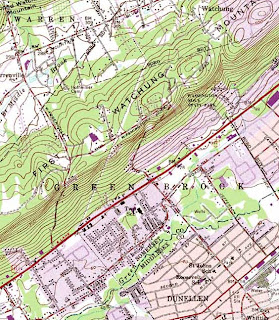
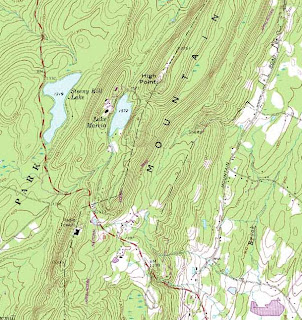
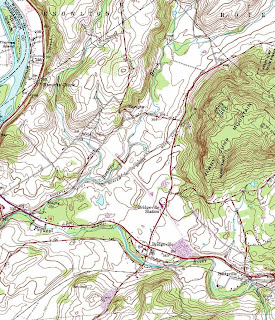
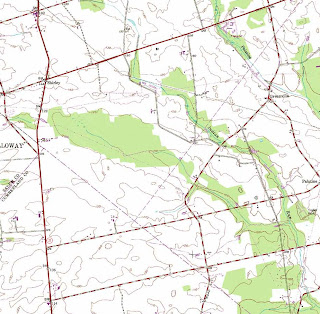
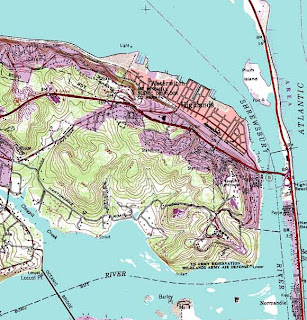
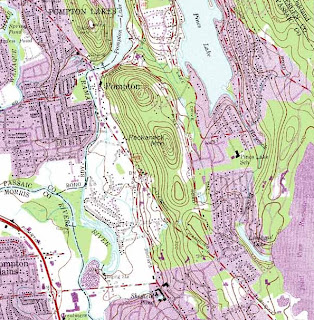
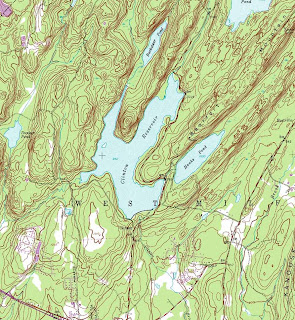

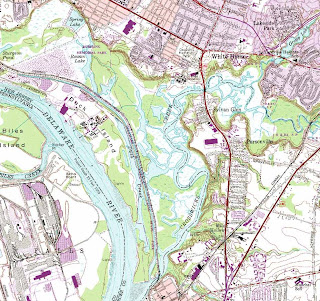
A special thanks goes out to Mike Siegel and the Rutgers Cartography Lab. This is a great resource for students and for pros. A national resource is the Libre Map Project, but it is a bit harder for first time users.
25 January 2022
FloodCam
Sea Isle City has installed a live cam to help the general public observe coastal flooding on neighborhood streets. While a coastal storm can cause flooding, keep an eye on the tide charts for sunny day flooding.
Phil Lewis
Prepping for a lecture that includes a few minutes on Phil Lewis and found this nice memorial note from a few years back as well as an older appearance he made in the NY Times. Incredible contributions.
21 January 2022
For a snow day
You can save this one for a snow day. Someone has built a Wikipedia History game. As a public participatory experience, there is a Github site for improving the game by reporting bad histories.
18 January 2022
First egg of the new year
17 January 2022
The road ahead for nondelegation
“There is a possibility that the court can write an opinion,” says Michael Burger, executive director of the Sabin Center for Climate Change Law at Columbia University, “that really reflects a core challenge to the fundamental basis of the regulatory state — for the ways in which our federal bureaucracy or federal agencies have evolved and operate.” In other words, if the Supreme Court applies the most conservative interpretation of the constitutional challenge, it could entirely knock out the system by which we protect air and water in the U.S. — not to mention scores of other federal laws.Assuming that the oral arguments really happen, the news will be interesting to read the next day. Watchers will keep a particularly close eye on the comments and questions from Justice Gorsuch whose mother had a difficult time as EPA Administrator.






